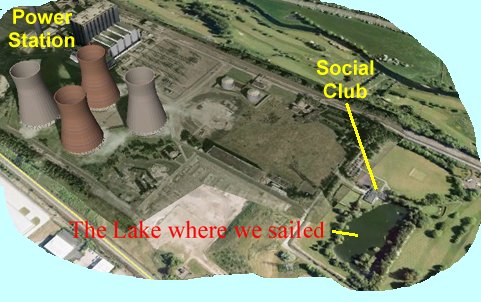Our History
Rugeley Power Station
The two Rugeley Power Stations were coal-fired power stations located on the River Trent at Rugeley. The first power station on the site, Rugeley A power station was opened in 1961, but has since been closed and demolished.
Rugeley B power station was commissioned in 1970 and closed on 8 June 2016, with demolition starting in Autumn 2018. The Chimney was demolished on 24th January 2021 and the Cooling Towers came down in Summer 2021. Rugeley B had an output of 1,000 megawatts (MW) and had a 400 kilovolt (kV) connection to the national grid. The B station provided enough electricity to power roughly half a million homes.
To construct the newer B Station the contractors had to raise the ground level to avoid flooding from the River Trent. Two borrow pits were used, and the smaller one became the lake used by the modellers. See the picture on right. The Midlands Electricity Generating Board built a Sports and Social Club alongside the smaller pit in the early 1970's. This Midlands Electricity Sports & Social Club was established for employees. In the early days the number of associates was strictly limited to only 10% of all staff, giving only 125 associates (including the wives of members!) ; As you can imagine there was quite a waiting list for membership from people outside the power station.


The main club established subsidiary sections such as fishing, modelling etc.. but you always had to join the main club first. The Social Club ran its own licenced bar and lounge area, had a snooker room with two full sized tables, a ballroom with stage, a games room, and after a few years, expanded the facilities and added a small kitchen and food became available. See the pictures below A model railway section built and operated a raised off the ground 5" gauge rail track about ½ mile long. They built and operated beautiful model steam engines.

At an early stage in its history the Power Station tried to fill-in the lake by dumping the waste ash - unfortunately this was too alkaline and it killed the fish! The solution eventually adopted was to install two steam dredgers, working from each end of the lake and to dredge the ash out and replace it with soil. The work was not totally completed, and two small islands were left in the middle of the lake, but at least the fish could survive. The story is that there was an official visit by a senior person (royalty?) and they were instructed to remove the unsightly steam dredgers - but they hadn't quite finished - hence the islands.

